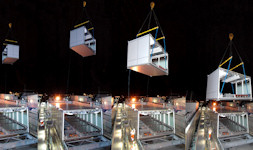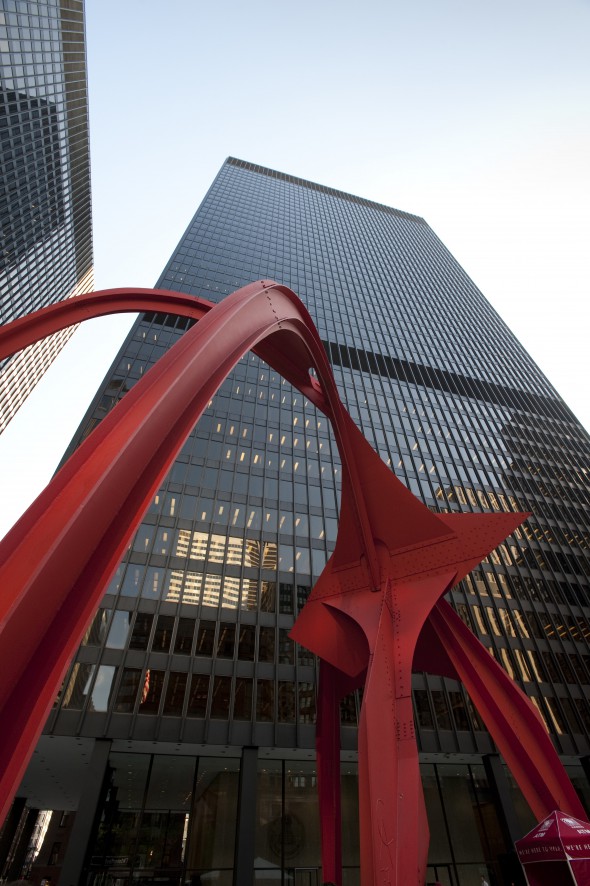ACSA Offsite Conference in Philadelphia
Offsite Conference was Historic
The Association of Collegiate Schools of Architecture (ACSA) recently (September 27-29, 2012) concluded their fall conference Offsite: Theory and Practice of Architectural Production in Philadelphia. Miletus Group was proud to sponsor the keynote address: Offsite in the UK. It was given by Jaimie Johnston, Director at Bryden-Wood, London. Miletus President James B. Guthrie, AIA also moderated a couple of panels and attended a number of the papers given. Schools from all over the US and several other countries were represented as both presenters and attendees.

Bryden-Wood
BAA Airport Corridor Product
The depth of the research and conversation was impressive. This may be the first time so much brain power has been singularly focused on the discussion of the past, present and future of offsite and prefabricated construction methods in architecture. It gives one hope that the architectural community is embracing this method of construction with a greater depth of interest and knowledge than it ever has before. In the past we have seen some dabbling by some famous and not so famous architects, but at the ACSA conference there was a very real depth and breadth to the conversation of offsite as an architectural solution. It remains to be seen if this event will be The inflection point of offsite moving from an architectural novelty to an integrated part of the building of architecture, but it may very well be.
As Guthrie pointed out in his keynote introduction: “If we look at the long history of iron and steel in architecture, we see its roots as a non-architectural structural building material at the beginning of the 19th Century. At that time it was embraced by structural and cost engineers. 80 years later, a French bridge engineer caught the world’s imagination by building the functionless yet dramatic Eiffel Tower. About that same time Jennings and Sullivan were in Chicago developing the first architectural expressions based on iron. It took another 40 years until Mies turned it into poetry. In the historic arc of offsite construction, we are at the time of Sullivan. The coming years should prove very exciting as architects learn to use and exploit offsite.”
The papers from the ACSA fall conference on Offsite will be published soon.
For more on ACSA: http://www.acsa-arch.org
No Less True: Mies vs Modular

View from Below the Eiffel Tower Paris, France
In the early days of iron and steel, these new building materials were seen as a practical solution to building issues, not aesthetic ones. Steel was something structural and capital engineers embraced early because it solved a building size and economic problem. Engineers like Gustav Eiffel learned early on how to exploit metal for long spans, primarily in bridges. When Eiffel turned a bridge 90 degrees and created the Eiffel Tower he opened a lot of eyes to the architectural expression steel can take. Yet, it took a couple more decades before Ludwig Mies van der Rohe came along and figured out how to make poetry and architecture out of steel.
Mies gave us great insight into his way of thinking when he said:
“This is no less true of steel and concrete than of wood, brick and stone. We must remember that everything depends on how we use a material, not on the material itself. New materials are not necessarily superior. Each material is only what we make it.”
Modular and off-site construction have been around for many decades now solving only practical problems. If Mies found himself in our time he might say:

Kluczynski Federal Building; Mies van der Rohe
“This is no less true of off-site construction than of on-site construction. We must remember that everything depends on how we use a method of construction, not on the method itself. New methods are not necessarily superior. Each method is only what we make it.”
It is time to thank the engineers for developing modular and off-site methods, but now it is also time for poetry and architecture in modular and off-site construction to emerge.
Architecture +
© Miletus Group, Inc. 2011



